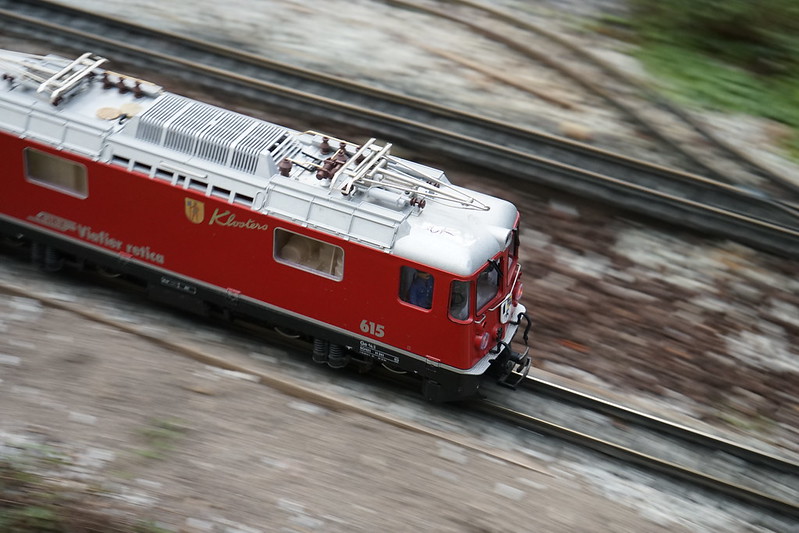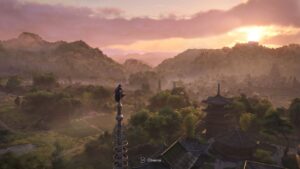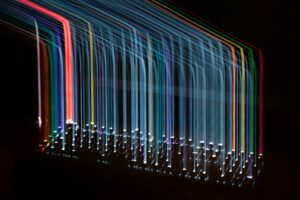
The digital imaging world has seen dramatic leaps in technological innovation in 2014, leaving camera bigwigs like Nikon and Canon feeling a little hot under the collar.
The first salvo came from Sony, which introduced the Alpha 7 mirrorless camera system late last year. It has since introduced two more variants — the Alpha 7s and Alpha 7r — plus an update in the form of the Alpha 7 Mark 2. Meanwhile, South Korean electronics giant Samsung pulled a fast one when it launched the NX1 in September.
So far, the Alpha 7 Mark 2 and the NX1 have captured the imagination of photographers worldwide with better sensors, form factor and features that would have cost a small fortune just a few years ago.
Handling and ergonomics

Both cameras are petite compared to midrange DSLRs. The lack of a mirror box has helped to shave extra inches off their bodies.
The Alpha 7 Mark 2 does not provide a full grip so my little pinky finger was left dangling, while the NX1 is tall enough to accommodate a full grip. A vertical grip would be a welcome addition to the Alpha 7 Mark 2 in this case.
The cameras are also well-constructed with magnesium alloy. In terms of build quality, the Alpha 7 Mark 2 feels heavier and more balanced when matched with heavy FE full frame lenses as compared with the Nx1.
That said, the Samsung shooter does not feel too plasticky. Both cameras’ weather-sealed bodies should also withstand the rigours of shooting in all weather conditions.
Direct access to controls is what differentiate basic cameras from advanced ones. With easily accessible controls and button mapping on both cameras, users can focus on getting the right shots instead of hunting for menu settings.
I placed the AF mode, AF point, ISO value, metering, aperture and shutter settings where my right hand is. As someone who changes settings a lot, the absence of locks on these two high-end cameras is also a relief.
The Samsung NX1 offers more options for changing settings via a touch-enabled rear screen, an iFunction button on the lens, and a settings knob on the left side of the camera. An LCD panel at its top pane also makes it easier to view camera settings.
The NX1’s video recorder button is also placed in a more natural position, while the same button on the Alpha Mark 2 sits next to the thumb in a recessed position.


Sensor
It was the Nikon D800 DSLR that reignited the megapixel war with a 36MP sensor.
With the NX1, you get Samsung’s first Back Side Illuminated (BSI) 28MP APS-C sized sensor, promising higher sensitivity and improved dynamic range that comes close to that of the Alpha 7R and Nikon D810.
While the Alpha 7 Mark 2 sports a modest 24MP sensor, there’s nothing stopping Sony from building a new iteration with a 36MP sensor that’s handy for taking landscape shots and producing big prints.
Both cameras are capable of producing stunning photos at lower ISO settings. When shooting with high ISO settings of 2500 and above, the Samsung NX1 offers very usable images – even at ISO 3200.
Still, Sony’s bigger sensor offers more options with a slightly better performance when shooting at ISO settings of 3200 and above. That said, most people would do fine with ISO 2500. When matched with a light sensitive lens of f2.8 and below, high ISO usage will be curtailed, unless you need very high shutter speeds to capture action scenes.


Auto focus and viewfinder
This is where Samsung has outdone all major camera makers with 205 phase detection points, 209 contrast detection points and 153 cross types. The AF points cover more than 90 per cent of the viewfinder with AF sensitivity rated from -4EV to -20EV.
The Sony shooter, on the other hand, is rated from -1EV to -20EV. This makes it less sensitive when focusing on darker parts of a scene, helped only by 99 phase detection points and 25 contrast detection points.
With so many superlatives here, one would be easily swayed by the sheer numbers. However, note that manually choosing focal points while composing a shot is far more accurate. Most images would turn out fine with either camera, though the NX1 would be the darling of sports and action photographers.
For the most part, both cameras are responsive when composing shots through the electronic viewfinder or the rear LCD screen. But the NX1 is so close to the actual experience that it feels like using an optical viewfinder!



Lens offering
The Sony Alpha 7 Mark 2 uses the NEX E-Mount, giving it a certain level of lens support.
However, using the APS-C lens means the image will be cropped to 10MP, underutilising the full frame sensor. The Alpha 7’s FE (Full-mount E) lens has 7 offerings, of which 4 are from German lens maker Carl Zeiss. So, owning a good lens with the Alpha 7 will cost more.
Granted that Sony’s own Alpha DSLR lens can be used via an adaptor, it would be great to see more affordable yet optically good FE mount lens in the near future.
Samsung’s NX system has been around for sometime. But unknown to many, the system has lenses that perform really well for their price. Along with the NX1, Samsung has introduced two professional grade S Lenses, the 16-50mm f2-2.8 lens and the 50-150mm f2.8 lens.


Unique features
The Sony Alpha 7 Mark 2 is the first full frame mirrorless camera with five-axis IBIS (In Body Image Stabilisation) that’s useful for shutterbugs who are into macro photography. A built-in stabilisation system means old legacy lenses can now enjoy vibration dampening. This is good news to Alpha 7 owners who love adapting older lenses to newer camera bodies.
The Samsung NX1 has some nifty tricks up its sleeves. It is the first camera that can record 4K imagery using the newer and more efficient H.265 codec without turning to external recording equipment. Like a high-end DSLR, the camera can also shoot at 15 fps at full RAW and Fine JPEG files sizes with ease.
Battery consumption
The two cameras have features that require a good amount of battery juice to keep things going. Unfortunately, the Alpha 7 Mark 2’s IBIS function is a power guzzler, consuming 50 per cent of battery power when I was halfway through a shoot. The Samsung NX1 fared better, depleting 30 per cent of its power during the same shoot.
In any case, both cameras would do well with a vertical battery grip and an extra backup battery.
The NX1 can also be charged with a microUSB port using an external battery charger while it is still in use. This is useful when shooting time-lapse sequences or video footages over a long period of time. The Alpha 7 Mark 2, on the other hand, would need to be shut down before it can be charged.
Conclusion
The two cameras will appeal to different segments of the market, with the Sony Alpha 7 Mark 2 geared towards casual users who prefer a camera that does not compromise on image quality.
With the NX1, Samsung has adopted a Swiss army knife approach by squeezing as many features as possible into a small body that even professionals would crave.
Both are able shooters that would not disappoint avid photographers. However, the Samsung NX1 has a slight edge for being more flexible in catering to different genres of photography. I would be happy to bring the Samsung NX1 to a sporting event.







sensor Sony A7S II , is modest, compared to that of the pixels Sony a7r II, is build to 4k video mode.
The price of the Sony A7S II is $ £ .3.000,00 against Samsung nx1 £ 1,100.00 !!!!
what a pathetic attempt at a review/comparison!
Really “While the Alpha 7 Mark 2 sports a modest 24MP sensor” a 4MP on a FF sensor you call it modest compared to an APS-C with 28?!
Why people try to post articles when they clearly has no idea what they are talking about…amazing
One important point – what is the battery type used ?